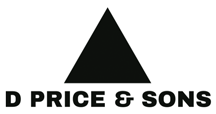Shot Blasting
Shot blasting is an abrasive cleaning process that helps to remove oxides and other debris from the surface of a material. The process of shot blasting uses spherical shot as an abrasive media, which is propelled at a high velocity at the surface to be cleaned. This removes dirt, debris and other contaminants from surfaces. The material used as shot media plays an important factor in how effective the process is. Certain materials work best for select surfaces. This can be discussed with you based on your individual requirements.
How Does Shot Blasting Work?
Shot blasting is made effective by the propulsion of this media through a high-powered machine. These machines blast the selected media at high velocity towards the surface for preparation. Many machines have the ability to adjust the selected velocity based on the shot media being used and the composition of the surface.
Shot blasting is also an ideal method of cleaning rough surfaces, such as concrete flooring, as it can get into the peaks and troughs of the surface. For smooth surfaces, this method of abrasive blasting is ideal for preparing a surface. It removes debris and lifts all dust in the process, leaving the surface ready for work.
The typical materials used for shot blasting include, but are not limited to:
- Steel
- Aluminium
- Zinc
- Copper
What Surfaces Can Be Shot Blasted?
Shot blasting is suitable and effective on many different surfaces. These include, but not limited to:
- Concrete
- Carbon Steel
- Engineering Steel
- Stainless Steel
- Cast Iron
- Titanium
- Copper
- Certain types of ceramics
As shot blasting is an abrasive form of cleaning, there are a number of surfaces which should not be shot blasted. For instance, rubbery or elastic surfaces are not suitable because they would absorb the impact and render the process ineffective. We also recommend avoiding this process on sticky floors or surfaces where the impact will be absorbed and potentially leave the shot media stuck to the surface.
Is Shot Blasting Safe?
Shot blasting as a process can be considered dangerous if not undertaken by a skilled professional. This is due to the force that the shot media is subjected to in order to make it effective. However, when completed by trained professionals, the process is perfectly safe.
To ensure safety, additional safety measures must be put in place before work is undertaken. These include PPE, cordoned areas and safety screens.
What Is The Difference Between Shot Blasting And Sandblasting?
As we mentioned above, shot blasting is a safer method of abrasive cleaning over sandblasting in the respect that it releases less dust into the air around the machine. However, sandblasting can be used on softer surfaces to offer a smoother finish and it can also be used to remove the likes of graffiti from walls.
Due to the nature of the material used in shot blasting, it’s too hard to be used on a number of surfaces and will likely cause damage. For this reason, shot blasting is more suitable for surface preparation, rather than average surface cleaning.
The History Of Abrasive Blasting
The first abrasive blasting was undertaken in 1870 by Benjamin Chew Tilghman, with the idea said to have originated from observing nature's natural pattern of erosion - running water and wind-blown sand. The first abrasive material used was sand, but it was discovered that inhaling the silica particles led to silicosis. Sand was still used as an abrasive media for the next 6 decades.
By 1893, the air processor made the industrial use of sandblasting possible and by 1904 Thomas Panghorn added compressed air to Tilghman's design which created a metal-cleaning sand blasting machine.
In 1918, the very first sandblasting enclosure was constructed, with a window to view the blasted object with a barrier put between the workers and the dust particles to ensure they did not inhale them as easily. Exhaust fans were also incorporated during this time.
By 1939, different abrasive media types were introduced, with many still being used today. This is where the introduction of shot blasting, rather than sandblasting, became a well-known and used abrasive cleaning method.
The construction of high-powered abrasive blasting machines has varied, with a number of different designs being introduced each decade. In modern machines, there is an increased focus on the safety aspect of the machine where there has been an increase of shatter-resistant screens and covers between the machine and its operator. These are the machines that we use today.
Contact D Price & Sons Today
If you would like to learn more about shot blasting in Staffordshire, you can talk to our team here at D Price & Sons. Our experts will be happy to discuss the process and arrange a quote for you.
Based in Longton, Stoke-on-Trent, we are an established skip, grab and mini digger hiring company as well as the premium supplier of high-quality coal, kiln dried logs, decorative gravel and building aggregates for customers across Staffordshire and the surrounding areas. For any enquiries on our products or services, please contact us today.
